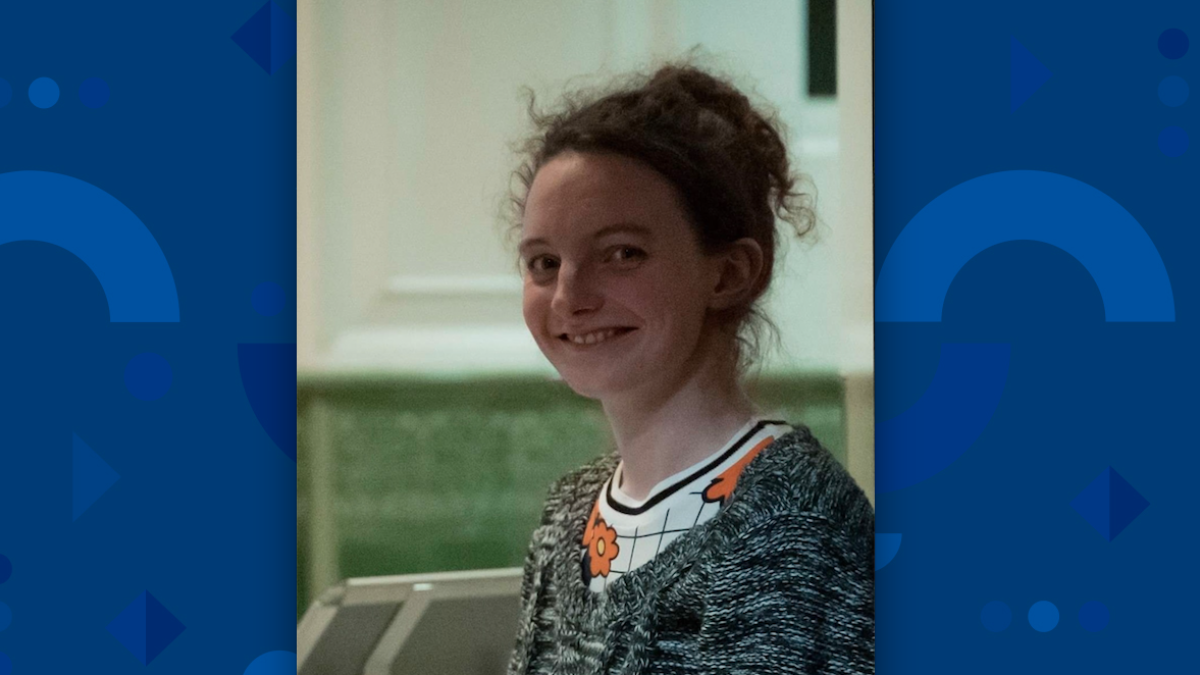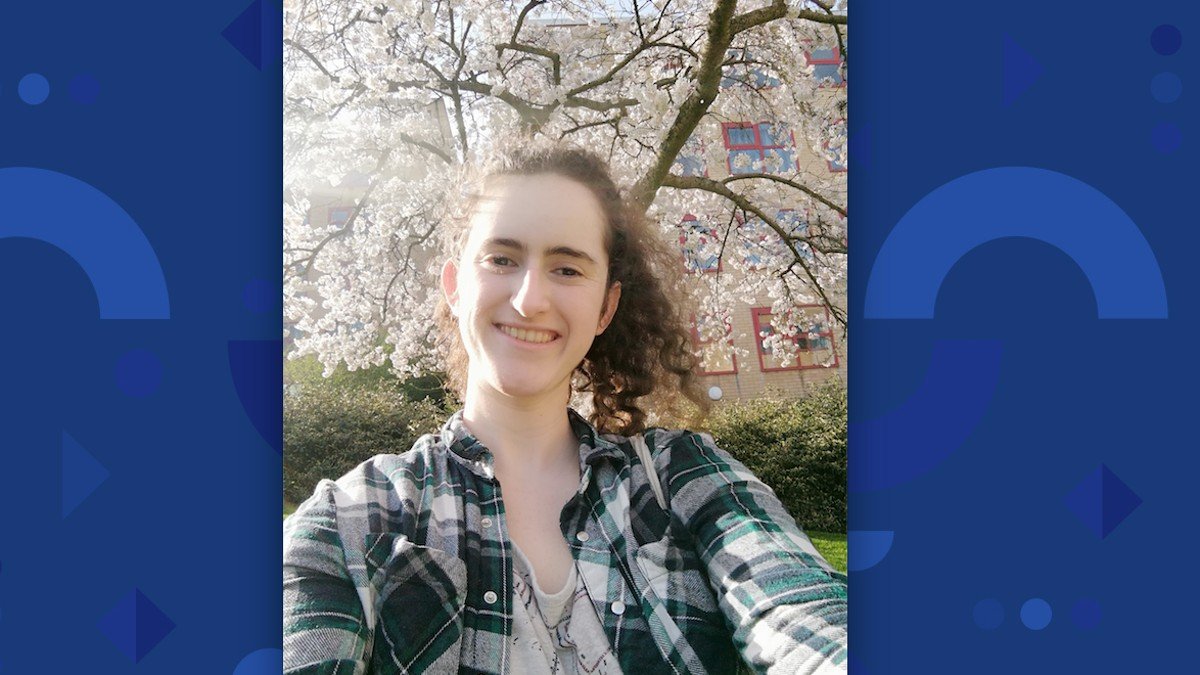Following in Daphne’s footsteps: Meet our female mathematicians
Surrey’s home to an incredible range of female mathematicians. As part of our Year of Surrey Women in Science and Engineering – marking 50 years since Daphne Jackson became the UK’s first female Professor of Physics at Surrey – we talk to a few of them.

(Clockwise from top left): Josephine, Laura, Amani and Grace discuss the legacy of Daphne Jackson and other influential women in their academic lives
Surrey’s Daphne Jackson became the first female professor of physics in the UK in 1971. How does her story resonate with you?
Josephine Solowiej-Wedderburn: Daphne Jackson was both a great scientist and a pioneering advocate for change, demanding the opportunity for people to thrive who didn’t follow the typical linear academic career trajectory. She’s an inspirational role model.
Laura Jones: Professor Jackson’s an inspiring researcher whose work contributed to an important cause and who used her influence to create a more inclusive environment in STEM (science, technology, engineering and maths). She must have had a lot of will power and audacity to get to that place at that time, which makes her all the more impressive.
Grace Pardoe: It seems crazy to me that while my mum was growing up, having a female professor in a STEM subject was a rarity! Daphne Jackson inspired other women to overcome the barriers they faced. It’s these women who have gone on to inspire a new generation.
Amani Sadu: Like Daphne Jackson, I value education very highly. It’s the foundation to shaping and building our futures. It’s also important to me, as course rep, that students should have the opportunity to express themselves and feel heard.
Who've been the influential or supportive women in your academic journey and why?
JSW: I struggled studying mathematics as an undergraduate. There were so many letters and symbols, and I couldn’t quite give them any meaning. Then in my final term, I took a course in mathematical biology delivered by Dr Julia Gog. Suddenly, things started to make sense and I regained a glimmer of why I’d set out to study mathematics in the first place. Julia’s course is the reason I’m still doing mathematics.
LJ: The most influential woman in my life is my mother, who’s so free and independent. She always does what she wants to do, inspiring and encouraging me to do the same. My high school maths teacher was the first person who encouraged me to study the subject after she saw how much I enjoyed her classes. Then I’ve been lucky to make friends who sailed on the same swaying boat that is my academic journey.

Clare Woodman, the Chief Executive of the EMEA Region at Morgan Stanley, remains an influential role model for Grace
GP: A woman that influenced me is Clare Woodman. She’s the Chief Executive of the EMEA Region at Morgan Stanley. I first learnt about her story while I was on placement. She didn’t begin her career in finance until she was in her thirties. It teaches me there’s no time limit to have achieved your goals by and you don’t need to have everything perfectly lined up when you leave university.
AS: Last year, my mentor, Vachi, was incredible at getting me to become more organised whenever I was in a frenzy about my workload. My tutor, Professor Gianne Derks, has also been very supportive from checking in on me, to offering advice and listening to my many problems or issues.
What first got you interested in maths?
JSW: My parents are both artists, so naturally everyone joked that I’d become an accountant. This only spurred them on to show me that maths can be just as beautiful, creative and expressive as other artforms.
LJ: I’ve always enjoyed solving problems and puzzles, but going over a proof, an algorithm or a solution in an organised, rigorous and logical way is extremely satisfying and oddly calming. When I discovered this, I was hooked.
GP: I’ve always enjoyed maths! Luckily, I’ve had great maths teachers throughout my time in education. They encouraged me to believe in myself and were very supportive when I struggled with certain topics.

A GCSE teacher inspired Amani's love of maths
AS: My interest in maths began during my GCSEs. My teacher, Mrs Lockwood, was very passionate about maths. I began to see how the discipline played a part in the world beyond the classroom. I was also intrigued by the fact that maths is the same everywhere in the world.
What’s your area of research?
JSW: I’m an applied mathematician with a particular interest in cellular biophysics. I use mathematical models to explore and explain the world at a cellular scale, trying to understand how mechanical forces can influence cell fate.
LJ: I work in mathematical modelling, more specifically crime modelling. I study the spatial variation of crime across neighbourhoods, trying to understand why it clusters in some regions and how a community’s actions affect crime rates.
Is there a female mathematician who inspires you?

Surrey's Dr Carina Dunlop is a constant source of inspiration for Josephine
JSW: My PhD supervisor, Dr Carina Dunlop, has been a constant sourse of inspiration for several reasons: her ability to bring clarity to such a rapidly evolving field as cellular biophysics; to always be able to answer my solid continuum mechanics conundrums (that I might otherwise still be sat in a dark room trying to solve); and to conduct a zoom call while exploding paint was being played with in the room next door.
LJ: Dr Hannah Fry’s work in spatial variation is a great source of inspiration for me. She uses many tools from epidemiology and ecology to study a wide range of social problems. Also, she’s immensely funny in her podcast The Curious Cases of Rutherford and Fry.
GP: The women who worked in Bletchley Park, particularly Joan Clarke, inspire me. Joan gained a scholarship to Cambridge where she studied mathematics. However, she was denied a full degree because, until 1948, Cambridge only awarded these to males. In 1944, Clarke became deputy head of Hut 8, where she worked alongside Alan Turing. But because of her gender, she received significantly lower pay than the men.
AS: Katherine Johnson, Dorothy Vaughan and Mary Jackson are women I admire. They played a critical part in NASA’s space mission during the 1960s. As a woman of color, they’ve inspired me personally and they’ve taught me the true meaning of perseverance
Why should more women study STEM subjects?
JSW: Everyone has their own unique perspective they can bring to a scientific enquiry. The broader the range of people studying STEM subjects, the wider the range of ways we’re going to have to seeing and solving the biggest questions in science.
LJ: I don’t really like this question because it implies the reason for women to study science is different than the one for men. Women are smart and capable, and there’s no reason they shouldn’t study STEM subjects. Gender doesn’t have its place in deciding one’s career.
GP: Women must continue to break down the stereotypes and barriers we face. The fact it was only 50 years ago that Daphne Jackson became the first female physics professor highlights that we have plenty more progress to make.
What legacy do you hope you leave for the next generation of women in STEM?
JSW: At school, I remember ‘trial and error’ being re-branded as ‘trial and improvement’. I loved that. I think having a go and making mistakes are essential elements to learning maths or science. I’d like the next generation to celebrate the trials as well as the improvements.

Laura says she's doing what she loves – and she hopes that will motivate others to follow
LJ: I’m doing what I love. If it can motivate others to do it, too, I’ll be happy.
GP: I’ve been luckily enough to be able to mentor girls of secondary school age and it was extremely rewarding! I wish to continue doing this throughout my career. Hopefully, one day I can inspire others to achieve their own goals within STEM!
AS: I hope to be able to show the next generation of women scientists that we do belong when it comes to STEM-related careers. I also hope to show the next generation of women scientists how much variety maths has to offer.
Learn more about undergraduate and postgraduate study in our Department of Mathematics.
